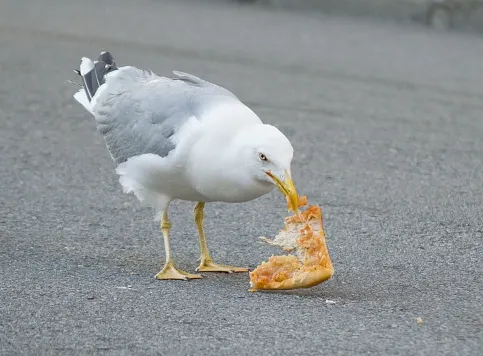
Seagulls have adapted to interrupt our picnics
Gulls have adapted their foraging behaviours to the cadence of the city.
Seagulls and the city. To know'm is to get your lunch stolen by them. Sometimes it seems that gulls know we're going to eat before we know we're going it eat. A new study, published by the University of Bristol, suggests that this is exactly the case; city gulls have adapted their foraging schedules based on city behaviour.
The research team found the cutest possible way of tracking these birds' behaviours and suited 12 gulls with little backpacks each filled with a GPS. They also observed groups of birds in natural and urban spaces, but the backpack-clad avians win the best-dressed award as their attire could not be more apropos.
The study shows that gulls foraging behaviour has developed based on human activity. Gulls have adapted new patterns based on the daily or weekly cycle of their human cohabitants, including the little ones.
Researchers observed the relationship between the cycles of gulls and students. "Our first day at the school, the students were excited to tell us about the gulls visiting their school at lunch time," the study explains. The results showed that "gulls were not only present in high numbers during lunch time to feed on leftovers, but also just before the start of the school and during the first break when students had their snack."
The study also looked at waste centres, illustrating "gulls were present in higher numbers on weekdays when the centre was open and trucks were unloading food waste."
The story changed when gulls foraged in parks for natural food sources. The researchers saw that the "gulls mainly went to park first thing in the morning and this may be because earthworms and insects are present in higher numbers during these early hours."
Summarizing its findings, the study shares that "gulls in cities are able to adapt their foraging schedule to make best use of food resources depending on their availability," further explaining that "some gulls even used all three feeding grounds in the same day, suggesting they might track the availability to optimise their energy intake."
The Bristol team shares that "these results highlight the behavioural flexibility of gulls and their ability to adapt to the artificial environments and time schedules of urban living."
As a suggestion for further research, it could be interesting to compare the adaptability of city gulls with city humans. In the meantime, at least some kids enjoy sharing their grub with the gulls.
And at least one person enjoys the confrontation: